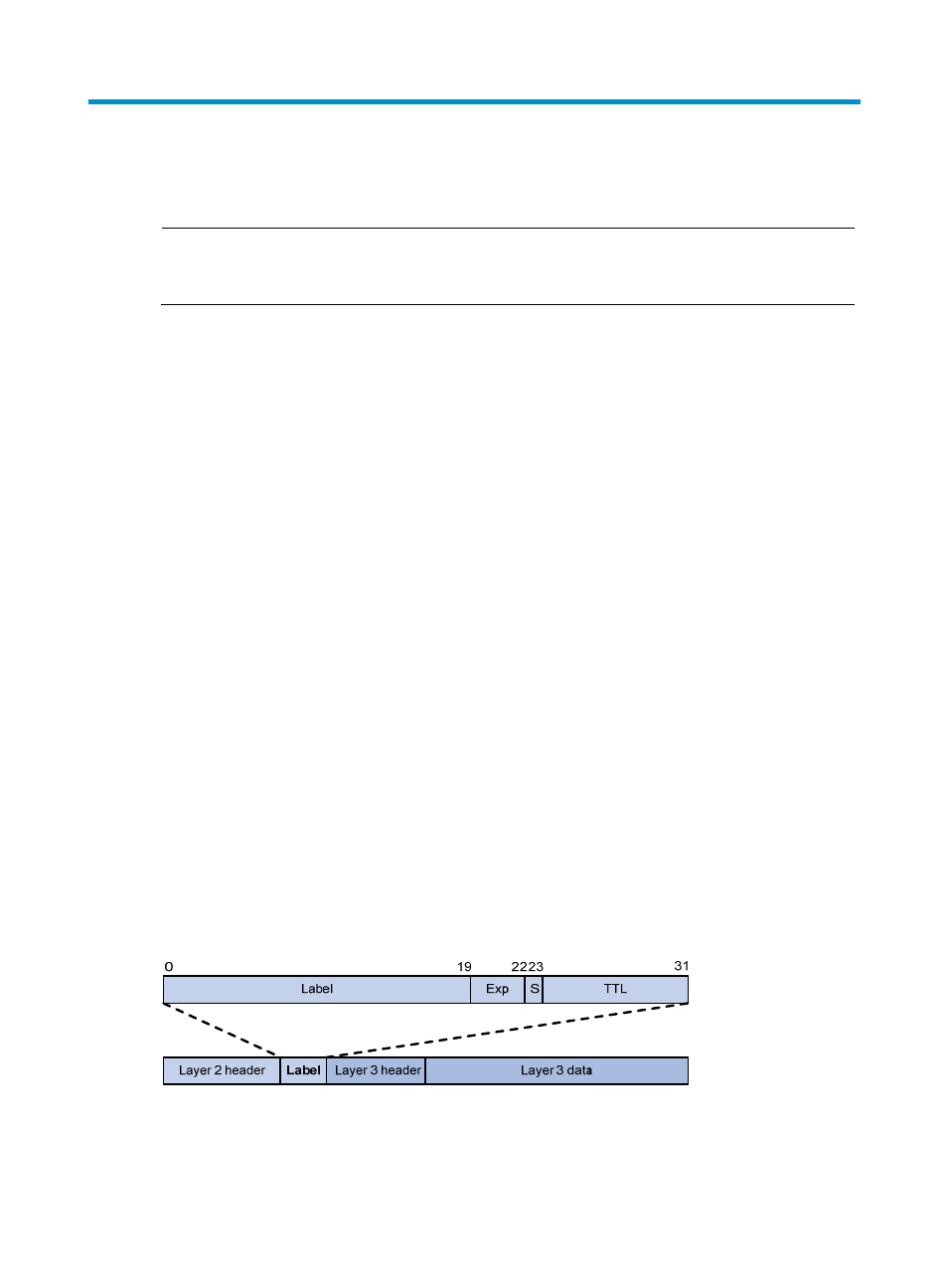Mpls basics configuration, Mpls overview, Basic concepts – H3C Technologies H3C S10500 Series Switches User Manual
Page 58: Label

47
MPLS basics configuration
NOTE:
To support MPLS and MPLS-based functions, the H3C S10500 Switch Series must use an SE, EA, or EB
card and use the ports on the card to connect to the user network and the provider network.
MPLS overview
Multiprotocol Label Switching (MPLS) enables connection-oriented label switching on connectionless IP
networks. It integrates both the flexibility of IP routing and the simplicity of Layer 2 switching.
MPLS has the following advantages:
•
MPLS forwards packets according to short- and fixed-length labels, instead of Layer 3 header
analysis and complicated routing table lookup, enabling highly-efficient and fast data forwarding
on backbone networks.
•
MPLS resides between the link layer and the network layer. It can work over various link layer
protocols (for example, Ethernet), provide connection-oriented services for various network layer
protocols (for example, IPv4 and IPv6), and work with mainstream network technologies.
•
MPLS is connection-oriented and supports label stack. It can be used to implement various functions,
such as VPN, traffic engineering, and QoS.
Basic concepts
FEC
MPLS groups packets with the same characteristics (such as packets with the same destination or service
class) into a class, called a “forwarding equivalence class (FEC)”. Packets of the same FEC are handled
in the same way on an MPLS network. The device supports classifying FECs according to the network
layer destination addresses.
Label
A label is a short, fixed length identifier for identifying a single FEC. A label is locally significant and must
be locally unique.
Figure 12 Format of a label
A label is encapsulated between the Layer 2 header and Layer 3 header of a packet. A label is four bytes
in length and consists of the following fields:
•
Label—20 bits in length. Label value for identifying a FEC.
